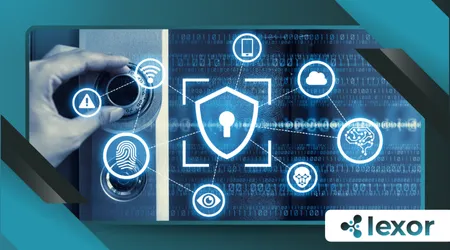How to Safely Store Your Crypto: A Beginner’s Guide to Wallets

In the fast-evolving world of cryptocurrency, learning how to safely store your crypto is not just a recommendation—it’s a necessity.
With over $3.8 billion lost to crypto theft in 2022 alone, according to um relatório da Chainalysis, securing your digital assets has never been more critical.
Whether you’re a seasoned investor or a beginner dipping your toes into the crypto waters, understanding the nuances of wallets is the first step toward safeguarding your funds.
The potential for loss is high, but with the right knowledge and tools, you can greatly reduce your risk.
This guide will walk you through everything you need to know about crypto wallets, from the basics to advanced strategies, ensuring you can confidently to safely store your crypto without falling victim to common pitfalls.
Why Safely Storing Your Crypto Matters
Cryptocurrencies operate on decentralized networks, meaning there’s no central authority to reverse transactions or recover lost funds.
Once your crypto is gone, it’s gone for good.
This makes security a top priority for anyone involved in the space.
Understanding the unique characteristics of cryptocurrencies is essential for effective management and security.
The concept of to safely store your crypto revolves around controlling your private keys—the cryptographic codes that grant access to your funds.
If someone gains access to your private keys, they can easily drain your wallet.
Conversely, losing your keys means losing access to your assets forever.
This is why it’s crucial to implement robust security measures from the beginning.
+ Cryptocurrency Security: Protecting Your Digital Assets in an Evolving Digital Landscape
Types of Crypto Wallets: Finding the Right Fit
Not all wallets are created equal.
Depending on your needs, you might opt for a hot wallet, cold wallet, or even a hybrid solution.
Let’s break down the options:
1. Hot Wallets: Convenience at a Cost
Hot wallets are connected to the internet, making them ideal for frequent transactions.
They include:
- Mobile Wallets: Apps like Trust Wallet or MetaMask.
- Web Wallets: Browser-based wallets like Coinbase Wallet.
- Desktop Wallets: Software installed on your computer, such as Electrum.
While hot wallets are user-friendly, their online nature makes them vulnerable to hacking.
If you’re using a hot wallet, ensure you enable two-factor authentication (2FA) and avoid storing large amounts of crypto in them.
Additionally, be cautious about the apps you download and the websites you visit to prevent phishing attacks.
Always choose reputable providers and keep your software updated to mitigate risks.
2. Cold Wallets: The Gold Standard for Security
Cold wallets are offline storage solutions, making them immune to online attacks.
They include:
- Hardware Wallets: Devices like Ledger or Trezor.
- Paper Wallets: Physical printouts of your private keys.
Cold wallets are the best way to safely store your crypto for long-term holdings.
They’re particularly useful for safeguarding large amounts of assets.
By keeping your private keys offline, you can protect your investments from the increasing number of cyber threats.
However, it’s essential to handle cold wallets with care, as physical damage or loss can lead to irreversible losses.
3. Custodial vs. Non-Custodial Wallets: Who Holds the Keys?
They hold your private keys, meaning you’re trusting them with your security.
While convenient, this setup can expose you to risks, especially if the exchange suffers a security breach.
- Non-Custodial Wallets: You control your private keys, giving you full ownership of your funds.
While custodial wallets are convenient, they’re also prime targets for hackers.
Non-custodial wallets, on the other hand, align with the ethos of decentralization and provide greater security.
Understanding the trade-offs between these options is crucial for making informed decisions about your crypto storage.

How to Safely Store Your Crypto: Best Practices
Now that you understand the types of wallets, let’s dive into actionable steps to ensure you to safely store your crypto:
1. Use a Hardware Wallet for Long-Term Storage
Hardware wallets like Ledger Nano X or Trezor Model T are widely regarded as the safest option.
They store your private keys offline, protecting them from online threats.
Investing in a hardware wallet is a proactive measure to secure your assets, especially if you plan to hold significant amounts of cryptocurrency.
Always purchase hardware wallets directly from the manufacturer to avoid tampering risks.
2. Enable Multi-Factor Authentication (MFA)
MFA adds an extra layer of security by requiring multiple forms of verification before granting access to your wallet.
This can include text messages, authenticator apps, or biometric data.
Using MFA significantly reduces the likelihood of unauthorized access, making it a critical step in your security strategy.
Be sure to enable MFA on any service that supports it, including exchanges and wallet applications.
3. Backup Your Wallet
Always create backups of your wallet’s seed phrase—a series of 12-24 words that can restore your wallet if lost.
Store this phrase in a secure, offline location.
Consider using a fireproof and waterproof safe to protect your backups from physical damage.
Additionally, you might want to create multiple copies and store them in different locations to further mitigate risks.
4. Keep Your Software Updated
Wallet providers frequently release updates to patch vulnerabilities.
Ensure your wallet software and firmware are always up to date.
Regular updates can protect you from newly discovered threats and enhance the functionality of your wallet.
Subscribing to newsletters or following official channels can help you stay informed about important updates.
5. Beware of Phishing Scams
Phishing attacks are a common way hackers steal crypto.
Always double-check URLs and avoid clicking on suspicious links.
Being cautious can save you from significant losses.
Educating yourself about common phishing tactics can further enhance your ability to recognize threats.
Para mais informações sobre como identificar e evitar fraudes, consulte este guia sobre segurança em criptomoedas.
Advanced Strategies for Maximum Security
For those looking to go the extra mile, here are some advanced techniques to safely store your crypto:
1. Multi-Signature Wallets
Multi-sig wallets require multiple private keys to authorize a transaction.
This adds an extra layer of security, as a single compromised key won’t grant access to your funds.
Multi-signature wallets are particularly useful for businesses or groups managing shared funds.
They ensure that no single individual can unilaterally access or move the assets without consensus.
2. Sharding Your Seed Phrase
Instead of storing your seed phrase in one location, split it into multiple parts and store them separately.
This reduces the risk of theft.
For example, you could keep one part at home, another in a safety deposit box, and a third with a trusted friend.
This method adds complexity for potential thieves while ensuring you can still recover your wallet if necessary.

3. Using Decentralized Exchanges (DEXs)
DEXs like Uniswap or SushiSwap allow you to trade crypto without giving up control of your private keys, reducing the risk of hacks.
Decentralized exchanges operate on blockchain technology, eliminating the need for a central authority.
This aligns with the core principles of cryptocurrency, promoting user autonomy and security.
However, be cautious and conduct thorough research before using any DEX to ensure its reliability and security.
++ The Rise of Stablecoins: What Makes Them Different?
Common Mistakes to Avoid
Even with the best intentions, beginners often make mistakes that compromise their security.
Here are some pitfalls to watch out for:
1. Storing Crypto on Exchanges
Leaving your crypto on an exchange is risky, as these platforms are frequent targets for hackers.
Always transfer your funds to a secure wallet.
While exchanges offer convenience, they also expose you to significant risks.
Consider using exchanges only for trading purposes and not as long-term storage solutions.
2. Ignoring Wallet Backups
Failing to back up your wallet can lead to irreversible losses.
Make it a priority to create and securely store backups.
Regularly review your backup procedures to ensure they remain effective and secure.
Consider testing your backups periodically to confirm that they work as intended.
3. Using Weak Passwords
A strong password is your first line of defense.
Avoid using easily guessable phrases or reusing passwords from other accounts.
Utilizing um gerenciador de senhas can help you generate and store complex passwords securely.
Additionally, consider updating your passwords regularly to enhance security.
Comparing Wallet Types: A Quick Reference
To help you decide which wallet is right for you, here’s a comparison of the most popular options:
| Wallet Type | Security Level | Ease of Use | Best For |
|---|---|---|---|
| Hardware Wallet | High | Moderate | Long-term storage |
| Mobile Wallet | Medium | High | Frequent transactions |
| Web Wallet | Low | High | Beginners |
| Paper Wallet | High | Low | Cold storage |
This table provides a quick overview, but it’s essential to consider your personal needs and risk tolerance when choosing a wallet type.
Researching the specific features of each wallet can also help you make a more informed decision.
The Future of Crypto Storage
As the crypto industry matures, so do the tools and technologies for securing digital assets.
Innovations like biometric authentication, quantum-resistant encryption, and decentralized identity solutions are paving the way for even safer storage methods.
These advancements aim to enhance security while making it easier for users to manage their assets.
However, no matter how advanced the technology becomes, the principles of to safely store your crypto remain the same: control your private keys, stay vigilant, and prioritize security over convenience.
Final Thoughts
Learning how to safely store your crypto is an essential skill for anyone entering the world of digital assets.
By understanding the different types of wallets, implementing best practices, and avoiding common mistakes, you can protect your investments and enjoy peace of mind.
The landscape of cryptocurrency is continually evolving, and staying informed is key to navigating it successfully.
Remember, the crypto space is as much about innovation as it is about responsibility.
Take the time to secure your assets, and you’ll be well-positioned to thrive in this exciting new frontier.
